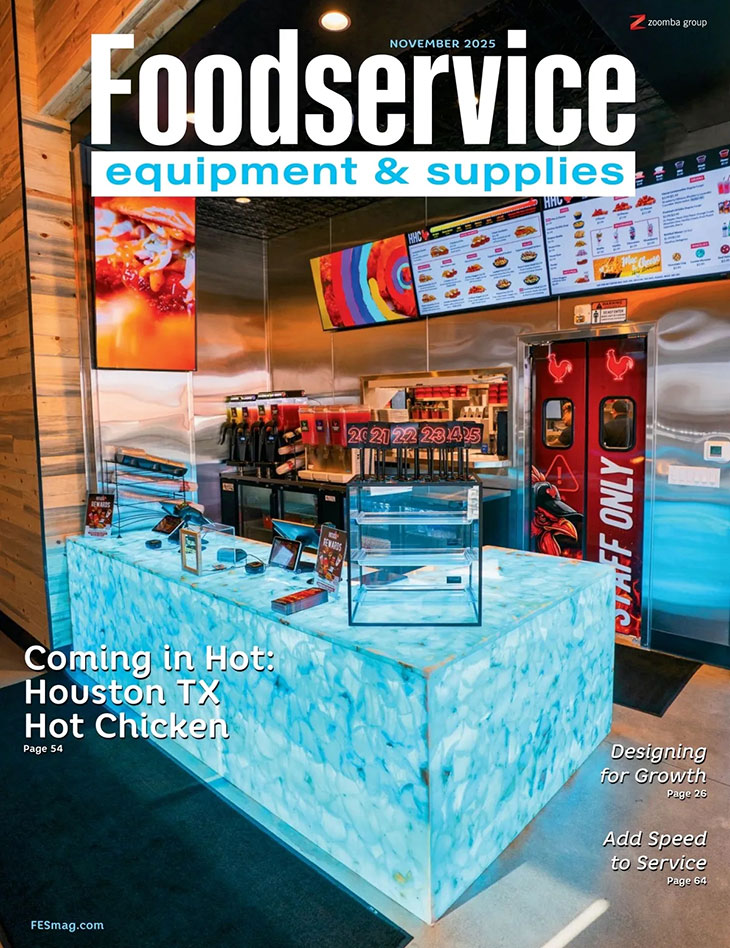Chicken’s finger-licking appeal. Meet a concept that emphasizes community and convenience. Recognition for a world-renowned chef’s humanitarian efforts. Hoshizaki updates its distribution network. Fears abound about the latest fee imposed by a major metropolitan city. These stories and more, This Week in Foodservice.
 Image courtesy of KFCWhy do chicken chains continue to rule the foodservice roost? The reasons are simple.
Image courtesy of KFCWhy do chicken chains continue to rule the foodservice roost? The reasons are simple.
First, chicken represents a very versatile protein. As such, consumers can enjoy it in a variety of ways, as an article from The Food Institute shows.
Second, operators continue to create unique experiences around chicken. The latest concept to embrace both the flexibility of the protein while delivering a new experience is Saucy from KFC. Judging from its Instagram account, Saucy aims to serve a younger client base.
The first location opened late last month in Orlando. Its menu features chicken tenders and 11 sauces, which allows guests to further customize their experiences. Saucy also boasts a lineup of 11 beverages that include a variety of teas, freezes and refreshers.
The unit features a drive thru and inside guests can order via kiosks. There’s also a brightly colored seating area.
Foodservice News
- Contract feeder Sodexo continues to emphasize community and convenience with its Food Hive concept. These markets support Sodexo’s local partners and minority- and women-owned businesses by featuring their products and other healthy options for students, per a company release. Sodexo intends to open 30 Food Hive units during the 2024-25 academic year, with the goal of getting to 100 locations by 2026.
- Multiconcept operator Artistry Restaurants has expanded into the Carolinas, per multiple published reports, including this one from Nation’s Restaurant News. The company did so by acquiring Hickory Tavern, a 20-unit casual dining concept with locations in North Carolina and South Carolina. Paul Zito will serve as president of Hickory Tavern. Artistry’s restaurant portfolio now spans seven concepts and 50 locations.
- Rising costs have consumers rethinking their dessert options, but in ways you might think. Dessert prices increased 3.2% year over year from 2023 to 2024, per data from Technomic. Yet consumer consumption of these sweet treats remains steady. So how are consumers adapting? They are shifting their purchasing to retail outlets or making desserts at home, per a Restaurant Business story. In fact, 39% of consumers now buy packaged desserts from a retail or grocery store, up 4% in the last three years, and 38% bake or make desserts at home, an increase of 5%, per Technomic data.
- The restaurant industry remained in expansion mode in November, per the National Restaurant Association. Its Restaurant Performance Index increased 0.8% for the month resulting in a final reading of 101.2%. This is the highest reading since July of 2023. Further, the report shows that restaurant operators continue to have a positive outlook for sales growth and the economy in the months ahead.
- Will a new fee lead to higher food costs and lower guest traffic levels? That’s what some New York City restaurant operators fear. The Big Apple now charges vehicles, including distribution trucks and guests’ cars, every time they pass through a high-traffic zone, as Restaurant Business points out. Operators fear this could lead to higher costs and fewer guests.
- Hoshizaki is updating its distribution network. Hoshizaki Corporation acquired Cannon Marketing, Inc., one of its long-standing distributors. CMI will be integrated into the Hoshizaki Southeastern Distribution Center, which is a consolidated subsidiary based in Orlando. CMI, a Hoshizaki distributor for more than 30 years, operated in North Carolina, South Carolina, and Eastern Tennessee with locations in Kinston, N.C., and Nashville, Tenn. Hoshizaki America also plans to open a distribution center in the Phoenix, Ariz., area in March. Until the Phoenix facility opens, Hoshizaki’s Las Vegas Distribution Center will be the main point of contact for customers in the Arizona area, per a company release.
- Kudos to renowned chef José Andrés. The founder of World Central Kitchen was awarded the Presidential Medal of Freedom, the United States' highest civilian honor, in recognition of his extraordinary contributions to humanitarian work and the culinary community.
Economic News
- Initial jobless claims declined by 9,000 for the week ending December 28, 2024, per the U.S. Department of Labor. The 211,000 claims represent an eight-month low, per Reuters. The 4-week moving average was 223,250, a decrease of 3,500 from the previous week.
- The number of job openings totaled 8.1 million on the last business day of November, the U.S. Bureau of Labor Statistics reported. This is up ever so slightly from the 7.8 million from the previous month, per a Seeking Alpha story, which adds that November’s totals were slightly greater than economists had projected. Hires and total separations changed little at changed at 5.3 million and 5.1 million, respectively. The number of people who quit their jobs came in at less than 3.1 million, a level not seen since the height of the pandemic, notes CNN, which adds that the labor market remains on solid ground due to low unemployment and the fact that the employment to population ratio remains high.
- Economic activity in the services sector expanded again in December, per the Services ISM Report on Business. The Services PMI came in at 54.1%, which is 2 percentage points more than November. This marks the 10th time the composite index reached expansion territory in 2024.
- Despite a slight uptick, economic activity contracted once again in December, per data from the Manufacturing ISM Report on Business. The Manufacturing PMI came in at 49.3%, up 0.8% from the previous month.
- New orders for manufactured goods decreased 0.4% in November, per the U.S. Census Bureau. This followed a 0.5% October increase. This was slightly greater than the 0.3% decrease economists had projected, per Reuters via Yahoo! Finance. Weakness in demand for commercial aircraft and businesses' reduced spending on equipment appear to be the main reasons for the decline. Still, economists remain optimistic about manufacturing for the coming year.



